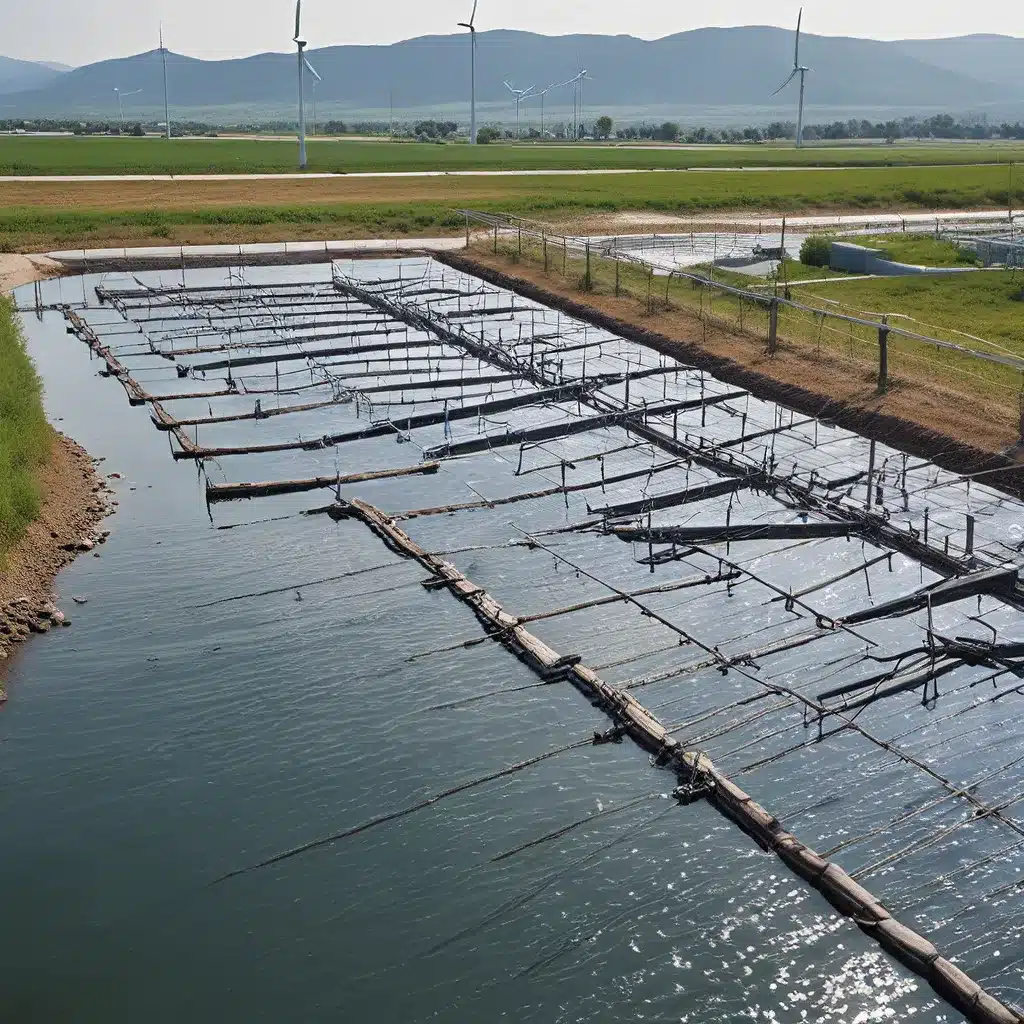
Powering the Future: Harnessing the Energy of Wastewater
Imagine a world where the very process of treating our wastewater not only safeguards our precious water resources but also fuels our transition to a sustainable energy future. Sound like science fiction? Think again! The untapped potential of renewable energy in water treatment applications is poised to revolutionize the way we power our communities and protect our environment.
Recent research has shed light on the remarkable energy-generating capabilities of wastewater, unveiling a treasure trove of opportunities that could forever change the game. You see, the organic matter in our wastewater – from human waste and food scraps to paper products – is a veritable goldmine of renewable energy. Through the magic of anaerobic digestion, this organic matter can be transformed into biogas, a clean-burning fuel that can be harnessed to generate electricity and heat.
Imagine a world where the very process of treating our wastewater not only safeguards our precious water resources but also fuels our transition to a sustainable energy future.
But that’s just the tip of the iceberg. Wastewater also harbors a wealth of other valuable resources that can be recovered and repurposed, like nutrients, metals, cellulose, and even bioplastics. By integrating these resource-recovery techniques into our water treatment infrastructure, we can create a truly circular economy – one where waste becomes a valuable commodity, rather than a burden.
Tapping into the Energy Potential of Wastewater
So, how exactly can we harness the energy potential of wastewater? Let’s dive in, shall we?
Biogas: The Renewable Fuel of the Future
The organic matter in wastewater is a goldmine of renewable energy, waiting to be unlocked. Through the process of anaerobic digestion, bacteria break down this organic matter, producing a methane-rich biogas as a byproduct. This biogas can then be captured and used to generate electricity and heat, reducing our reliance on fossil fuels and slashing greenhouse gas emissions in the process.
Imagine a future where the very act of treating our wastewater becomes a source of clean, renewable energy – powering our homes, businesses, and essential services. It’s a vision that’s not as far-fetched as it may seem. In fact, some pioneering water utilities have already made significant strides in this direction.
Take the Berliner Wasserbetriebe, for example – the water utility serving the city of Berlin, Germany. They’ve not only harnessed the biogas produced at their Schönerlinde sewage treatment plant to generate power and heat, but they’ve also constructed three wind turbines and two micro gas turbines to further supplement their energy needs. As a result, they’re able to produce around 84% of the energy required to operate the plant internally, saving up to 13,000 tons of carbon emissions per year. Now, that’s what I call a win-win!
Nutrient Recovery: Closing the Loop
But the energy-generating potential of wastewater doesn’t stop there. Wastewater also contains a wealth of nutrients, like nitrogen and phosphorus, that can be recovered and repurposed as agricultural fertilizers. This not only reduces the demand for synthetic fertilizers (which are often energy-intensive to produce) but also helps to conserve precious natural resources.
Berliner Wasserbetriebe has developed a patented process for recovering phosphorus from its sewage treatment plants, which they then sell under the brand name “Berliner Pflanze” (Berlin Plant) to horticulture and agriculture producers in the surrounding areas. It’s a brilliant example of how we can close the nutrient loop, reducing our environmental footprint while supporting sustainable farming practices.
Water Reuse: Conserving a Precious Resource
But the benefits of wastewater treatment don’t stop at energy and nutrient recovery. The water itself can also be treated and reclaimed for a variety of non-potable uses, such as irrigation, industrial processes, and even toilet flushing. This not only conserves our precious freshwater supplies but also reduces the energy and costs associated with transporting and treating fresh water.
Overcoming Challenges, Embracing the Future
Of course, the path to fully unleashing the renewable energy potential of wastewater is not without its challenges. Technological hurdles, regulatory barriers, and the need for significant infrastructure investments can all pose obstacles. But I firmly believe that with the right vision, the right partnerships, and the right public-private collaboration, we can overcome these challenges and usher in a new era of sustainable water treatment and energy production.
Innovative research is already paving the way, exploring cutting-edge technologies and processes that can maximize the recovery of valuable resources from wastewater. And forward-thinking utilities, like Berliner Wasserbetriebe, are leading the charge, demonstrating the real-world feasibility and benefits of these approaches.
So, what are we waiting for? Let’s dive in, roll up our sleeves, and get to work on unlocking the boundless potential of renewable energy in water treatment applications. The future is bright, and it’s powered by the very waste we’ve long sought to dispose of. Together, we can transform our water treatment infrastructure into a wellspring of sustainable energy, nutrients, and resources – all while safeguarding the precious water resources that sustain our communities.
Intrigued? I certainly am. Why don’t you head over to Inland Waters Inc. and learn more about how we’re pioneering this exciting new frontier? Who knows – you might just find the inspiration to join us on this journey towards a more sustainable future.


